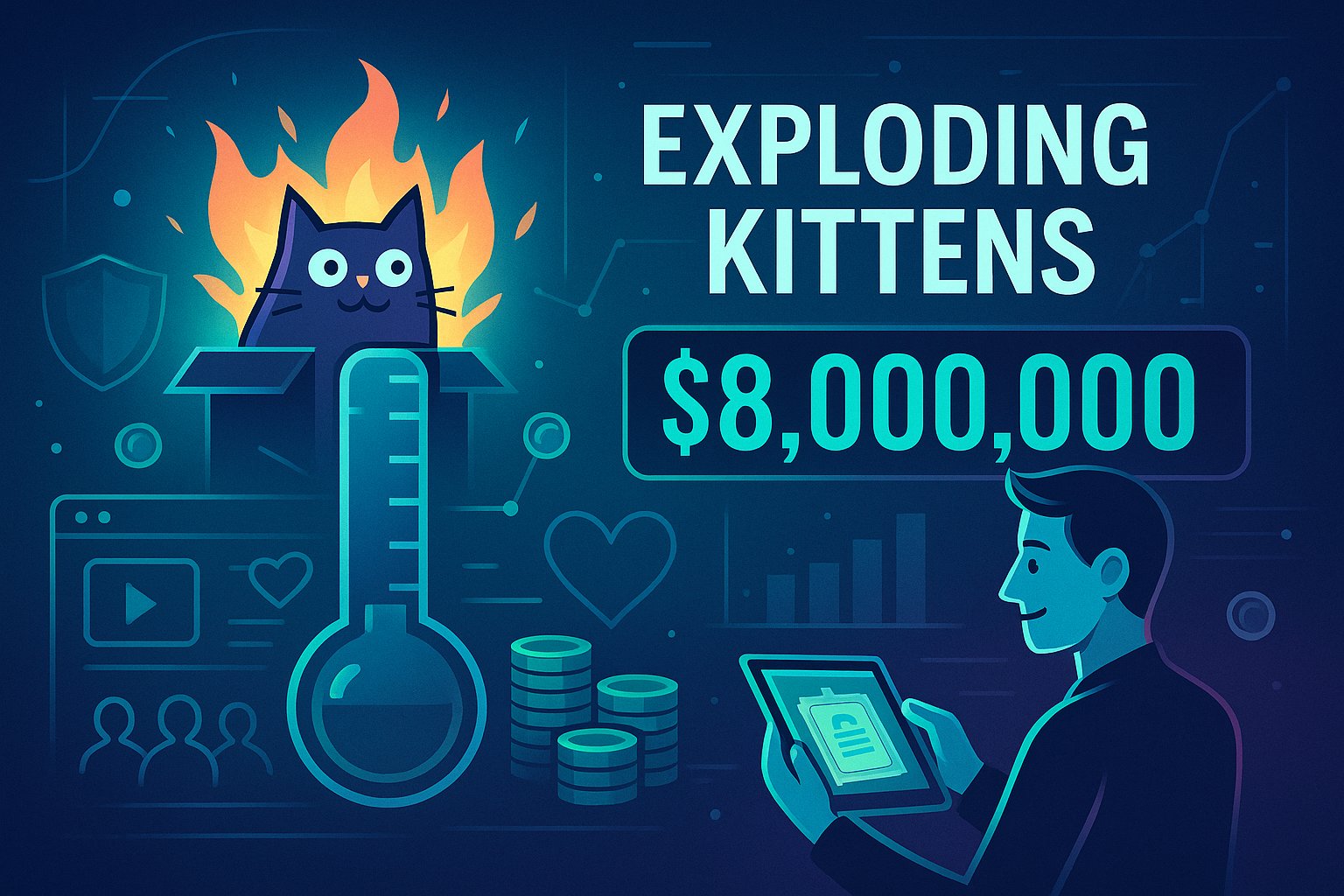Navigating the Crowdfunding Minefield
Crowdfunding has revolutionized the way entrepreneurs, artists, and social innovators raise capital, turning the traditional investment model on its head. From revolutionary gadgets to heartfelt community initiatives, successful campaigns have achieved global impact and multimillion-dollar raises with nothing more than a compelling idea and an online platform. Yet for every triumph, there are countless campaigns that sputter, stall, or collapse under the weight of unmet expectations. Reports indicate that fewer than 40 percent of projects on major platforms reach their funding goals, leaving many creators disheartened and backers skeptical. Understanding why most crowdfunding campaigns fail is not about assigning blame but about uncovering the critical factors that distinguish winning strategies from doomed ventures. It involves examining the psychological dynamics of backer behavior, the logistical hurdles of production and fulfillment, and the architectural elements of campaign design—from narrative construction to reward structuring. By dissecting these common pitfalls and learning how they undermine even the most promising ideas, creators can equip themselves with proven tactics to beat the odds. This article jumps into the anatomy of crowdfunding failures and presents an actionable roadmap to maximize your chances of success, ensuring your next campaign not only reaches its goal but resonates deeply with a community eager to support your vision.
Unrealistic Funding Goals and Poor Budgeting
At the heart of many failed campaigns lies a disconnect between ambition and practicality. Creators often set funding goals based on idealized production costs or aspirational team expansions rather than rigorous cost analyses, leading to budgets that overlook shipping fees, manufacturing overruns, platform commissions, and marketing expenses. A campaign that aims to raise $100,000 may actually require $130,000 in gross pledges to cover all associated costs. Fall short, and backers receive no product, reputations are damaged, and future endeavors become impossible. Successful creators combat this by conducting thorough cost modeling before launch. They secure manufacturing quotes with contingencies, factor in worst-case logistics scenarios, and tolerate a buffer of at least 15 to 20 percent above the projected budget. By transparently sharing line-item budgets with backers, they foster trust and manage expectations. Instead of framing stretch goals as luxuries, they embed realistic manufacturing and shipping milestones into their funding tiers, ensuring that the primary goal remains achievable and directly tied to product delivery commitments.
Weak Pre-Launch Preparation and Audience Building
Crowdfunding does not start on launch day; it begins weeks or months earlier with intentional community cultivation. Many campaigns falter because their creators underestimate the importance of pre-launch marketing, relying solely on platform discovery algorithms instead of proactively gathering a core audience. Without an email list, engaged social media followers, or press contacts ready to amplify the message, even the most innovative projects can languish in obscurity.
To beat the odds, successful campaigns treat pre-launch as Phase One: building a list of early adopters through teaser websites, downloadable lead magnets, and invitation-only prototype demos. They cultivate relationships with niche influencers who resonate with their project’s theme and secure early press coverage in relevant blogs or podcasts. By the time the campaign goes live, these creators have a network of supporters poised to pledge within the first 24 hours—an essential window that signals momentum to the broader crowdfunding platform and triggers algorithmic promotion into featured or trending sections.
Ineffective Storytelling and Uncompelling Campaign Pages
Even the brightest idea can fall flat without a compelling narrative to engage backers. Campaign pages overloaded with technical jargon, dense text blocks, or ambiguous value propositions struggle to keep visitors’ attention. Rather than inspiring action, these pages feel like dry whitepapers, leaving potential supporters confused or indifferent.
Thriving campaigns, in contrast, weave stories that tap into emotional drivers—aspirations, shared values, and the thrill of co-creation. They open with a vivid scene that illustrates the problem their product or project solves, introduce protagonists (the creators and early adopters) on a transformative journey, and paint a clear picture of the impact backers can achieve. Every section of the campaign page—be it the “About” narrative, video scripts, or reward descriptions—works in concert to reinforce this central storyline. Visual elements, such as polished videos and authentic behind-the-scenes photos, humanize the creators and bridge the gap between idea and execution, prompting backers to become invested contributors rather than passive observers.
Poor Reward Structuring and Backer Incentives
Reward design is a delicate art: tiers must balance perceived value, production feasibility, and pricing psychology. Campaigns that offer too few options can alienate backers with varying budgets, while those with overly complex reward matrices create confusion and decision paralysis. Some creators also undervalue shipping logistics by promising heavy or bulky items without accounting for high international costs, prompting backers to abandon pledges at checkout. To outshine these pitfalls, successful campaigns employ tiered rewards that align with backer motivations. They offer an entry-level tier at a psychologically appealing price point—often just under a round dollar amount—to maximize impulse pledges. Mid-range tiers include the core product plus attractive extras, while premium bundles deliver collector’s editions or exclusive experiences for the most committed supporters. Clear labeling of shipping fees—or better yet, region-based shipping tables—ensures transparency. Limited early-bird specials create urgency, and custom-engagement tiers—such as behind-the-scenes access or personalized thank-you messages—foster deeper emotional investment for high-value backers.
Inadequate Marketing and Platform Leverage
Many creators mistakenly believe that launching on a major crowdfunding platform alone will drive sufficient traffic. In reality, platform algorithms reward campaigns that demonstrate early momentum, high backer engagement, and continuous updates. Projects that rely exclusively on organic visitor discovery without parallel paid or earned media strategies often languish in the shadows.
Overperforming campaigns integrate multi-channel marketing from Day One. They allocate part of their budget to targeted social media ads—leveraging lookalike audiences and retargeting pixels to convert website visitors into backers. Simultaneously, they send press releases to industry publications timed with major milestones—launch day, funding thresholds, or stretch goal announcements—to secure editorial coverage that boosts credibility. Affiliates and influencers are engaged with custom tracking links and unique promo codes, driving incremental traffic while allowing creators to measure channel effectiveness. By orchestrating these efforts in a coordinated marketing funnel, they ensure a steady influx of qualified backers that sustains momentum throughout the campaign lifecycle.
Failure to Communicate and Maintain Backer Trust
Once campaigns launch, many creators falter by retreating into operational silence, leaving backers to wonder if production is on track. Inconsistent or infrequent updates breed uncertainty, prompting backers to question whether funds are being handled responsibly. Worst-case scenarios involve creators disappearing entirely, leading to reputational damage that extends beyond a single project.
High-performing campaigns view transparent communication as non-negotiable. They publish regular updates—at least weekly—covering manufacturing progress, prototype refinements, and shipping schedules. When faced with setbacks, they openly acknowledge challenges, outline corrective actions, and reset expectations with new timelines. This candor transforms potential backlash into displays of solidarity, as backers rally to support creators through difficulties. Open comment threads and AMA (Ask Me Anything) sessions on campaign platforms or social media channels further strengthen connections, converting backers into advocates who defend the project against skeptics.
Neglecting Post-Campaign Fulfillment and Ongoing Engagement
Even campaigns that exceed funding goals can falter in the eyes of supporters if fulfillment processes break down. Creators who delay shipping, dispatch incomplete orders, or omit promised add-ons damage trust irreparably—and generate negative word-of-mouth that hampers future initiatives. Conversely, campaigns that excel at fulfillment turn backers into lifelong customers and community ambassadors. To achieve this, savvy creators establish partnerships with experienced fulfillment centers and shipping providers well before the campaign starts. They create detailed fulfillment roadmaps, including quality-control checkpoints and regional distribution hubs to minimize customs delays. Post-campaign surveys capture updated backer information promptly, while automated status notifications keep backers informed when orders are packed and dispatched. After delivery, creators maintain engagement through user-generated content contests, feedback collection for product improvements, and invitations to closed-loop beta testing on future editions. This continuum of care reassures backers that supporting the campaign was a wise investment in both product and people.
Misjudging Market Demand and Overestimating Trendiness
In the rush of campaign planning, creators often mistake personal passion for universal appeal. They bank on trendy buzzwords or fleeting cultural moments without validating whether a sizable audience exists or whether their product sufficiently distinguishes itself from competitors. Overconfidence in a niche concept can result in funding shortfalls when expected backer enthusiasm fails to materialize.
To avoid this trap, top campaigns undergo rigorous market validation before launch. They conduct surveys, run small-scale pre-orders, and analyze search-volume trends to gauge genuine interest. Competitive analyses identify gaps in existing offerings, informing unique value propositions that resonate with target demographics. Creators also solicit feedback through prototypes or concept visuals shared in relevant online forums, adjusting product features based on community input. By aligning campaign scope with realistic demand signals, they craft pitches that speak directly to an identifiable audience, maximizing the likelihood of achieving—and surpassing—funding goals.
Mastering the Art of the Pivot
Even with meticulous preparation, external factors—supplier issues, regulatory changes, or sudden market shifts—can upend campaigns mid-flight. Creators who rigidly adhere to original plans without room for adaptation risk derailment. In contrast, those who embrace strategic pivots transform potential disasters into opportunities for innovation and deeper backer alignment. Leading campaigns build flexibility into their roadmaps, allocating contingency budgets and modular product designs that can accommodate supplier substitutions or feature adjustments. They monitor real-time backer feedback via comment sections and social sentiment analysis, ready to iterate on reward structures, color options, or feature sets. When pivoting, they communicate the rationale transparently, framing changes as improvements co-created with the community. This agile mindset not only preserves campaign viability but often enhances product-market fit, converting backer participation into a competitive advantage rather than an afterthought.
Crafting Your Path to Crowdfunding Triumph
Crowdfunding remains one of the most democratizing forces in modern entrepreneurship, enabling creators to turn bold ideas into funded realities with nothing more than a pitch, a prototype, and a passionate community. Yet the path to success is laden with potential missteps—from unrealistic budgets and weak pre-launch audiences to poor storytelling, marketing gaps, and fulfillment failures. By unpacking the reasons most campaigns fail and spotlighting the winning tactics of past triumphs, this article has illuminated a comprehensive roadmap to beat the odds.
Key to victory is diligent preparation: realistic financial modeling, strategic pre-launch audience building, and relentless market validation lay the groundwork for a strong debut. Once live, a cohesive narrative, tiered reward structures, and multi-channel marketing sustain momentum. Transparent communication and agile pivots safeguard trust through operational challenges, while meticulous fulfillment and post-campaign engagement convert backers into lifelong advocates. Armed with these insights, the next generation of creators can approach crowdfunding not as a gamble but as a calibrated science—transforming visionary concepts into funded successes that resonate globally and endure beyond the campaign’s end. Success, after all, favors the prepared, the adaptable, and the community-centric. By embracing these principles, your crowdfunding venture can leap from hopeful idea to funded phenomenon, defying the odds that sink so many others.




